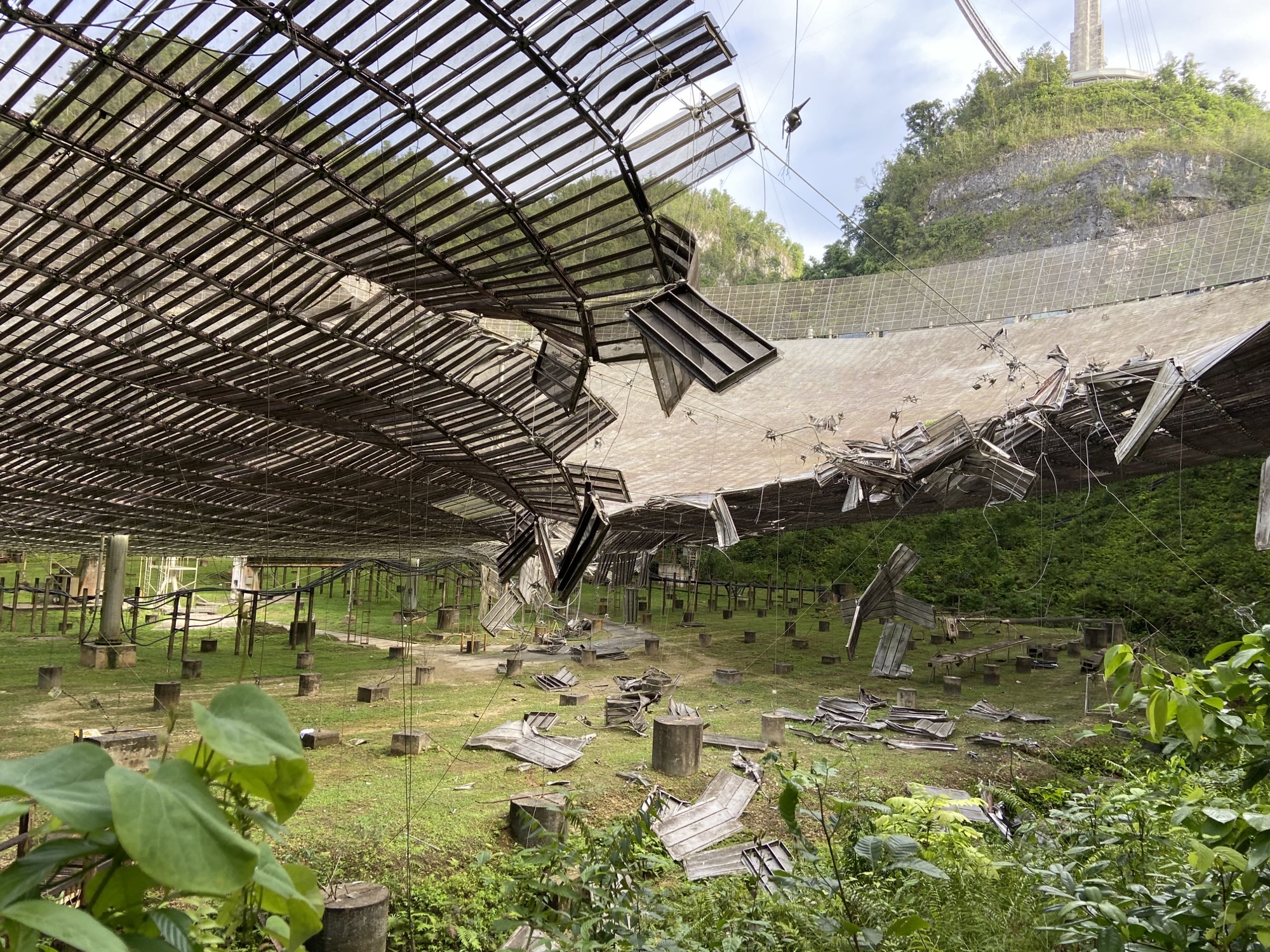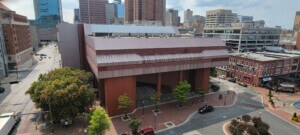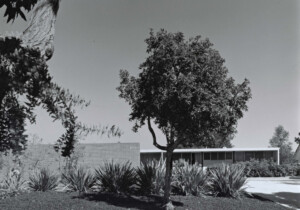Thirteen days after a second cable snapped at the Arecibo Observatory in Puerto Rico, cutting another gash through the 57-year-old main dish and dangerously increasing load on the remaining support cables, the worst-case scenario has come to pass. Today, the National Science Foundation (NSF) announced that they would be decommissioning and tearing down the 1,000-foot-wide radio telescope dish.
Although Arecibo Observatory itself will, the NSF stressed, remain open and workers will attempt to salvage as much as they can, the 900-ton instrument platform above the dish is at risk of “catastrophic” failure. The National Register of Historic Places-listed observatory will be evacuated save for essential personnel to reduce the risk of injury in case the platform falls before the decommissioning.
The slide towards decommissioning the dish happened quite quickly, and as some critics claim, as the result of years of deferred maintenance. In August, a three-inch-thick auxiliary support cable added in 1994 to help stabilize the (then new) platform above the dish slipped out of its socket, cutting a 100-foot-long gash through the telescope dish. Then, on November 6, a three-inch-thick main support cable snapped and damaged the dish even further as a result of having to carry extra load. That second break spurred a full engineering survey of the remaining cables and platform, as the main cable was reportedly only carrying about 60 percent of the maximum load it was rated for, meaning that the remaining support cables could be far weaker than expected.
A survey commissioned by the University of Central Florida (UCF), which manages the observatory, by Thornton Tomasetti after the second cable fell confirmed exactly that and they recommended that attempts to stabilize the platform and that demolition was unfortunately the safest option. The UCF then hired two more firms to provide assessments; while the first recommended immediate stabilization, the second agreed that demolition was the safest option. The NSF brought in their own independent engineers to go over the survey results and ultimately agreed.

“Although it saddens us to make this recommendation, we believe the structure should be demolished in a controlled way as soon as pragmatically possible,” reads a snippet of the action letter submitted by Thornton Tomasetti, released by the NSF. “It is therefore our recommendation to expeditiously plan for decommissioning of the observatory and execute a controlled demolition of the telescope.”
Over the next few weeks as part of the telescope’s decommissioning, the NSF will conduct high-resolution photography drone flyovers to build a model of the site, and if possible, collect more data on the fallen main cable. The observatory’s research will be migrated off-site remotely, and a controlled demolition will ultimately remove the dish.
The dish at Arecibo Observatory wasn’t just a scientific icon (as one of the few radio telescopes that can send as well as collect signals, it beamed out the famous Arecibo message in 1974), but also a cultural touchstone. The Arecibo dish was the largest single-aperture telescope in the world until 2016, and in addition to being a huge tourist draw, played prominent roles in GoldenEye, Carl Sagan’s Contact, The X-Files, and generally played a stand-in for most “giant telescopes searching the cosmos for intelligent life.”
“NSF prioritizes the safety of workers, Arecibo Observatory’s staff and visitors, which makes this decision necessary, although unfortunate,” wrote NSF Director Sethuraman Panchanathan in the announcement. “For nearly six decades, the Arecibo Observatory has served as a beacon for breakthrough science and what a partnership with a community can look like. While this is a profound change, we will be looking for ways to assist the scientific community and maintain that strong relationship with the people of Puerto Rico.”











